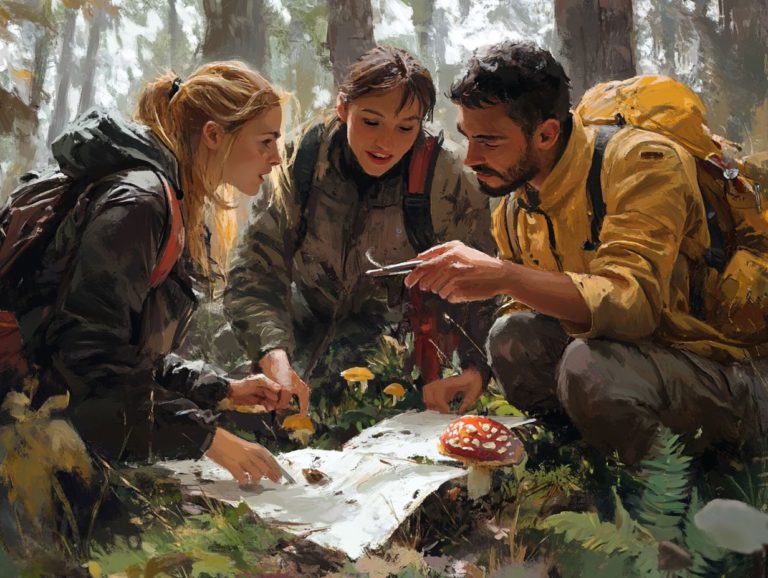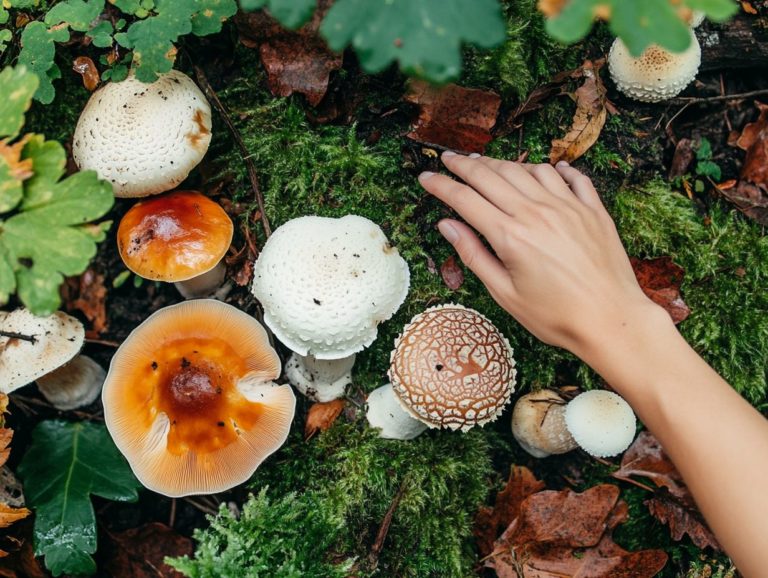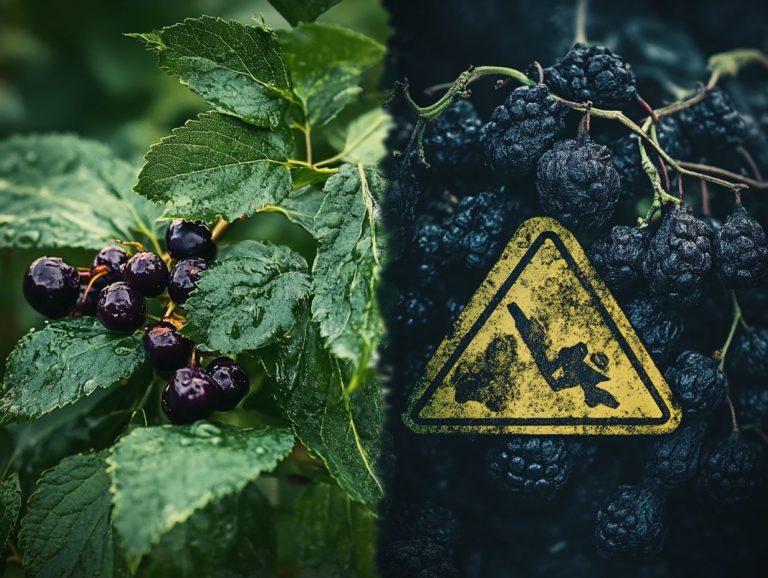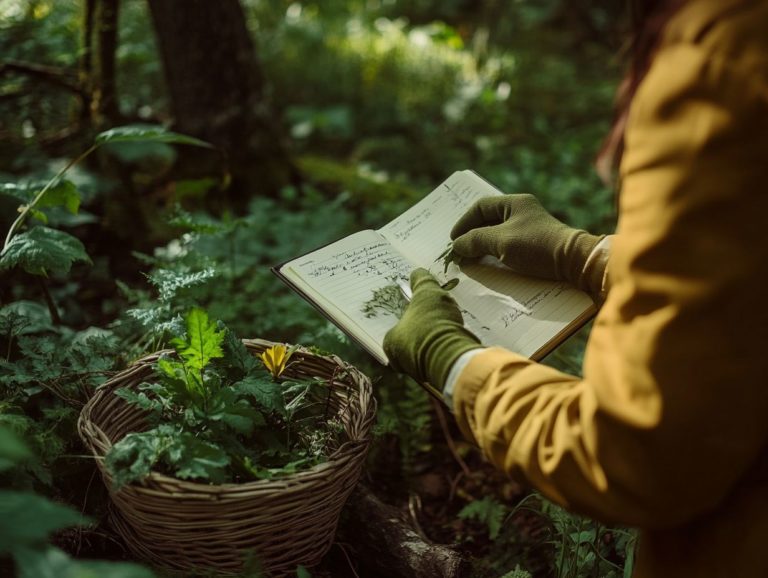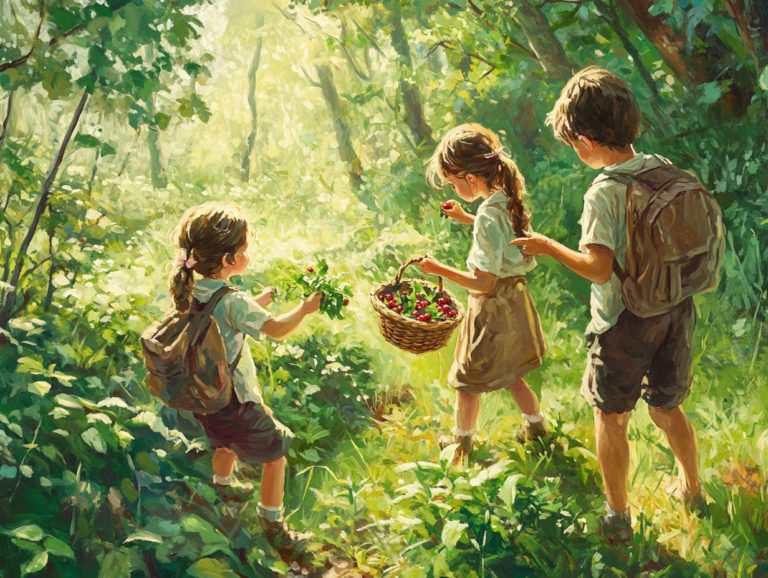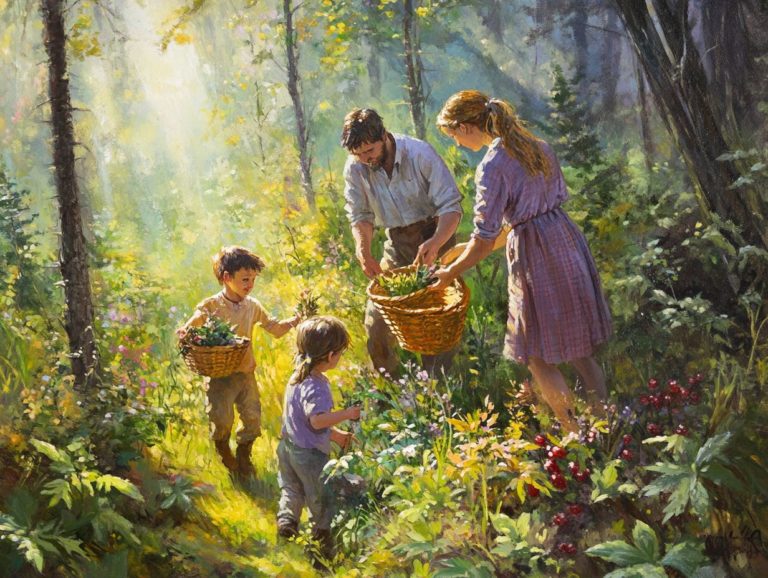When is the Best Time to Forage?
Foraging transcends mere food gathering. It unfolds as a journey into nature’s pantry, brimming with flavors and rich experiences just waiting for you to uncover.
This guide will illuminate the art of foraging, detailing what it entails while pinpointing the optimal times and conditions for your gathering endeavors.
Together, you will delve into crucial elements such as location, season, and essential safety tips. All designed to ensure a rewarding adventure awaits you.
Ready to discover the secrets of foraging? Let s dive in!
Contents
Key Takeaways:
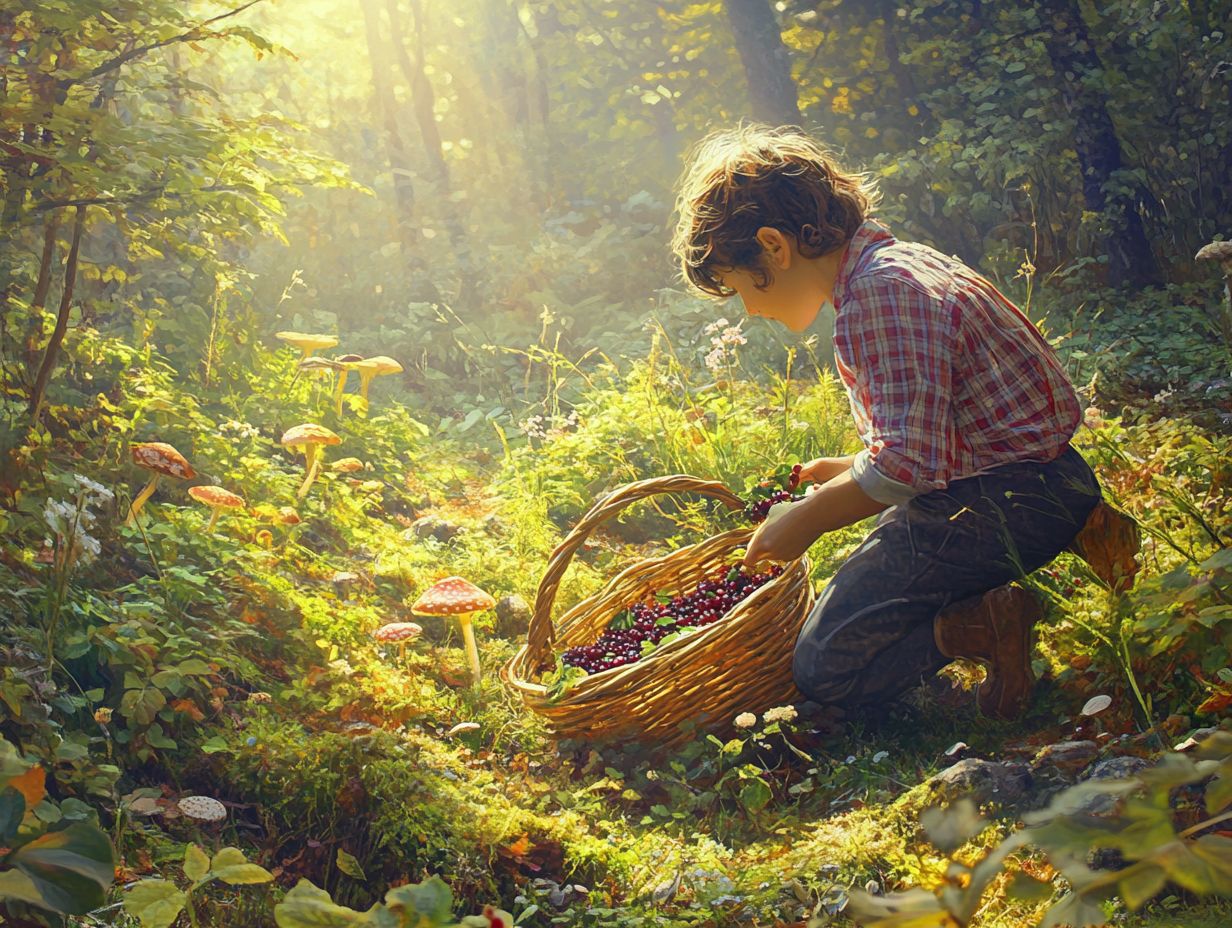
- Explore location, season, and weather before you forage.
- Morning and evening foraging have different benefits and drawbacks.
- Take safety precautions and use the right tools for successful foraging.
The Basics of Foraging
Foraging is the art of seeking out and gathering wild food from nature. It highlights our connection to the environment and the plant lifecycle.
This sustainable approach invites you to identify edible plants in various settings, from urban parks to rural landscapes.
This engaging outdoor activity immerses you in the rhythms of the seasons. Relish the experience of spring foraging for wild garlic and stinging nettles.
Embark on summer adventures collecting juicy blackberries. Embrace autumn’s bounty with sweet chestnuts and wild mushrooms.
Understanding the fundamentals of foraging is essential for anyone eager to delve into this rewarding and flavorful realm.
What is Foraging?
Foraging allows you to identify and gather edible plants, fruits, nuts, and mushrooms from nature’s bounty.
This practice connects you with your environment in a meaningful way. Discover the diverse flora flourishing around you.
Each type of foraging presents a unique experience. For instance, wild fruit hunting along hedgerows may surprise you with delightful blackberries or tangy raspberries.
On the other hand, searching for herbs like wild garlic or mint can elevate your meals with fresh, vibrant flavors.
Mushroom foraging offers great rewards but it requires careful identification to avoid toxic varieties. Common wild edibles like stinging nettles provide nutritious greens.
The thrill of uncovering these local ingredients instills a sense of adventure and a deep appreciation for the natural world.
Factors to Consider Before Foraging
Before you embark on a foraging trip, consider several critical factors that influence your success. Think about the location, season, and weather conditions.
Understanding the local environment and seasonal changes is essential for spotting edible plants that are ripe for picking. Foraging responsibly minimizes your impact on nature.
Familiarizing yourself with the ideal foraging times based on the weather can improve your gathering experience.
Location and Season
Selecting the right location and understanding the season are vital for successful foraging. These factors directly influence the variety of wild foods available for your harvest.
Different environments offer unique opportunities. For instance, forests may burst forth with wild garlic in spring, while open fields offer sun-ripened blackberries in summer.
Urban areas can also surprise you. Community gardens or overlooked green spaces often have thriving edible plants.
When picking your foraging site, keep sustainability in mind. Avoid overharvesting and respect local regulations.
As autumn rolls in, treasures like sweet chestnuts await your discovery. This ensures a flavorful bounty throughout the year while encouraging responsible foraging practices.
Weather Conditions
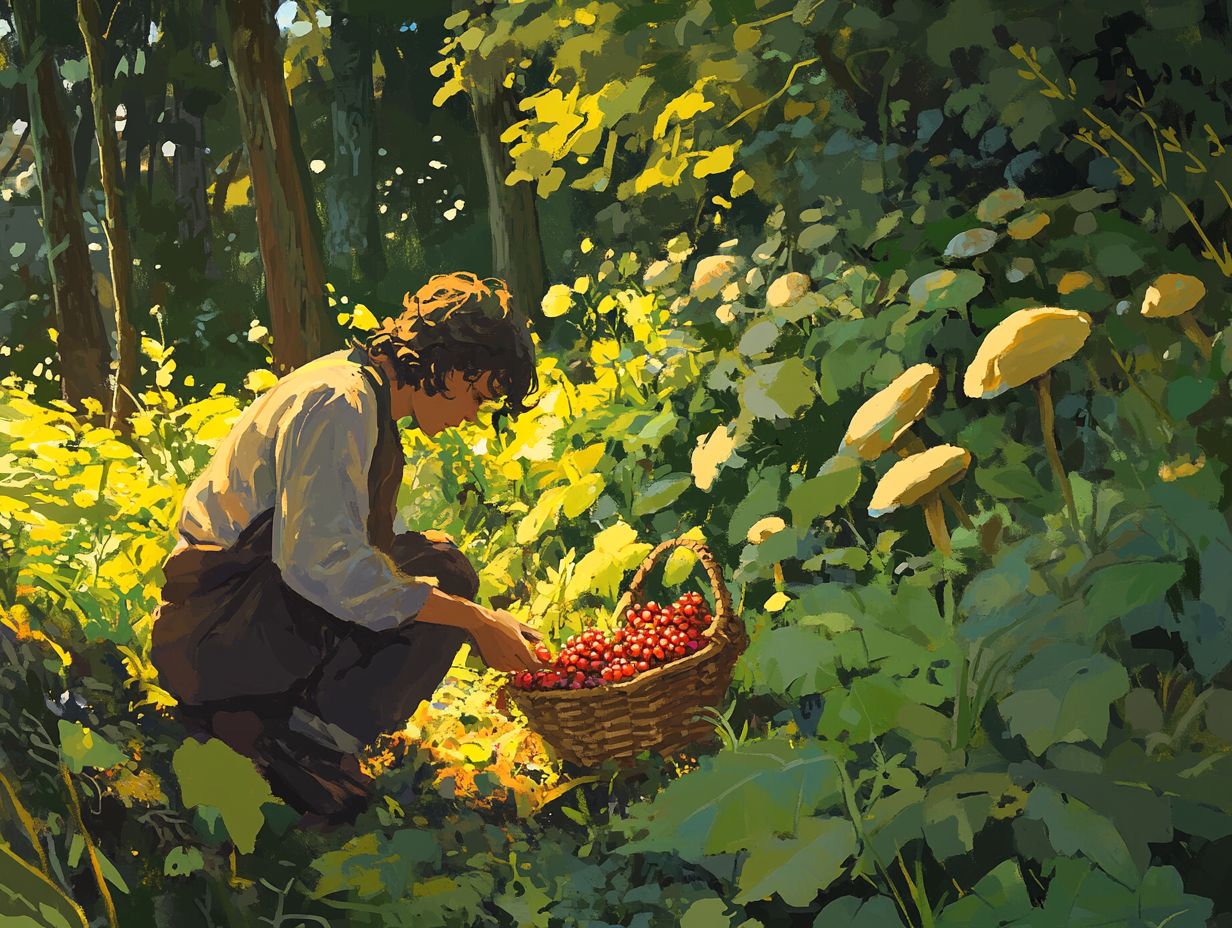
Weather conditions are essential to the success of your foraging expeditions. They influence not just the availability of edible plants but also the overall safety of your outdoor adventures.
Temperature variations determine when specific wild foods reach their best nutritional value. Rainfall affects soil moisture levels, impacting the growth rates of various species.
High moisture in the air encourages the growth of certain fungi, both edible and toxic. Stay alert while foraging.
To navigate these variables effectively, it’s wise to keep an eye on weather forecasts and dress appropriately for the conditions. This ensures your safety during your trek.
Understanding the connection between these weather factors enriches your foraging experience and enhances the quality of your gathering sessions.
Best Times of Day for Foraging
The timing of your foraging adventure can significantly influence your success. The optimal hours for foraging often depend on the wild edibles you re seeking, with both morning and evening presenting unique advantages.
Early mornings offer a refreshing start, as the dew coats the plants, making them appear more vibrant and inviting. On the other hand, evenings can be equally rewarding, often revealing an abundance of wild food ripe for the picking.
By grasping the benefits and drawbacks of foraging at various times, you can elevate your outdoor experiences to new heights.
Morning vs. Evening Foraging
Choosing between morning and evening foraging can profoundly influence both the quantity and quality of the wild food you gather. Each time slot presents its own distinct advantages.
Mornings offer a refreshing chill, perfect for exploring diverse landscapes in search of edible treasures. The cooler temperatures invigorate you and enhance the visibility of plants, making it easier to spot valuable wild greens and fungi before the sun takes over.
As an early riser, you can savor the tranquility of nature awakening, often encountering fewer competitors for those precious resources.
On the flip side, evening foraging has its own charm, with a quieter atmosphere that creates a unique ambiance for gathering. However, as daylight fades, many plants slip into the shadows, and competition can intensify among fellow foragers eager to seize the last bits of daylight.
Benefits and Drawbacks of Foraging at Different Times
Foraging at different times of day comes with its own set of advantages and disadvantages. These can significantly shape your experience and success in gathering wild edibles.
Take early mornings, for example those cooler temperatures and dewy plants create an ideal environment for spotting certain fungi or greens that thrive under such conditions.
As the sun rises and the light intensifies, other wild edibles, like berries, become more abundant and easier to identify.
On the flip side, late afternoons tend to bring a lively wildlife presence, with animals actively foraging. This can limit your access to certain edible plants.
By analyzing factors such as light availability and animal activity, you can strategically plan your perfect foraging adventure.
Foraging Safety Tips
Your safety is crucial on every foraging adventure!
By understanding essential precautions and being aware of common hazards, you can ensure a rewarding and secure experience in the wild.
It’s vital to know how to identify edible plants and be familiar with your local ecosystem. This awareness helps you steer clear of toxic counterparts, especially when gathering wild food like mushrooms, berries, and greens.
By following safety tips, you can fully savor the bounty of nature while keeping risks to a minimum. Act now to protect yourself!
Precautions to Take While Foraging
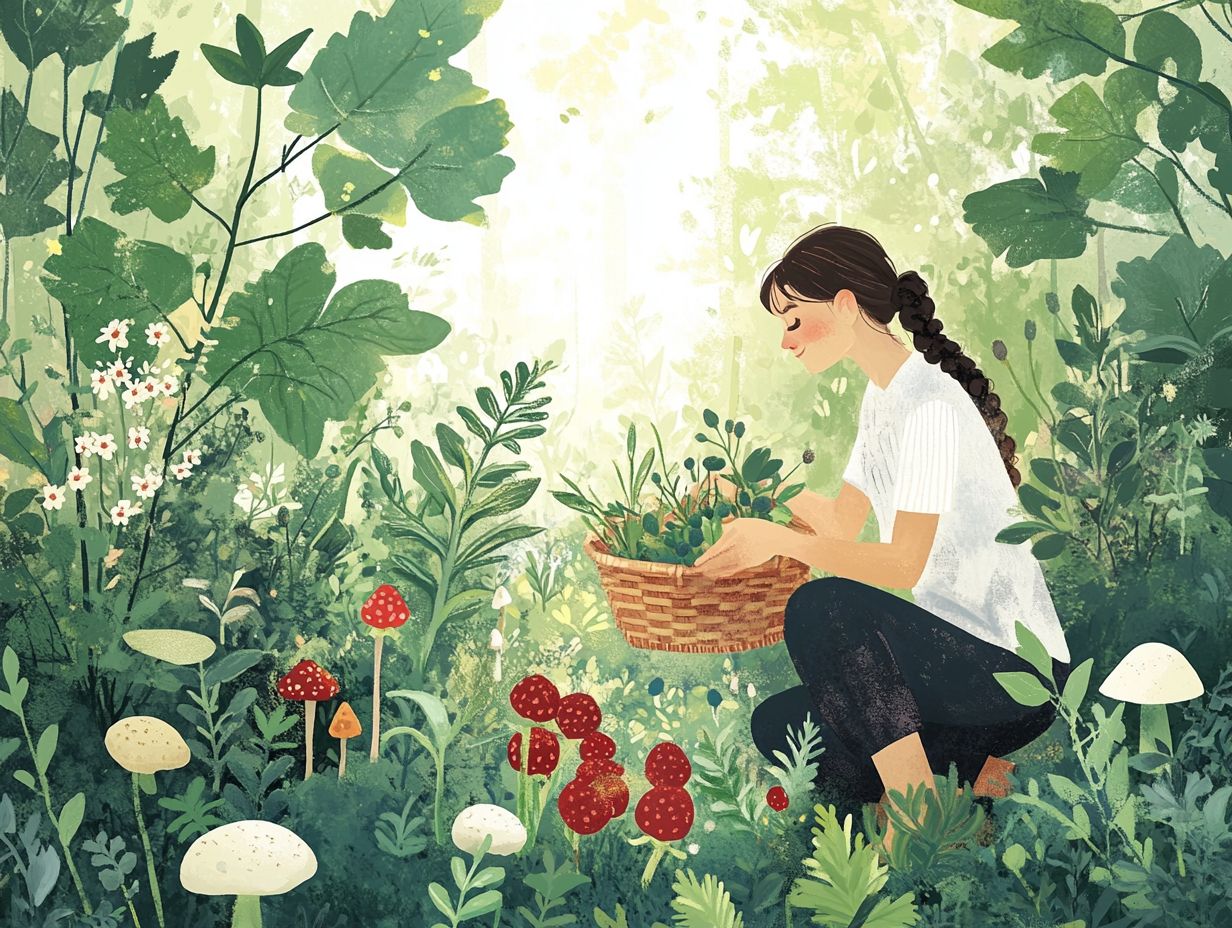
Precautions are crucial in foraging. They help you enjoy the experience without mishaps, especially when identifying wild and toxic plants.
Understanding the key features of edible and toxic plants can significantly boost your foraging success. Get to know the plants around you! Familiarizing yourself with traits such as leaf shape, flower color, and the shape of plants can save you from trouble.
Carry a reliable foraging guide; it serves as your go-to reference for identifying various species in the wild. Using herb identification techniques is very helpful snap clear photographs or note specific habitat conditions.
By following responsible wildcrafting practices, you not only ensure your safety but also promote environmental sustainability. This way, everyone can enjoy nature s bounty responsibly.
Common Hazards to Watch Out For
When you embark on a foraging adventure, it s vital to stay alert about common hazards that could threaten your safety and the quality of wild food you gather. Be mindful of poisonous plants and unpredictable weather conditions.
As you wander off the beaten path, keep an eye out for dangerous wildlife, such as snakes or aggressive insects, which can pose serious threats. Environmental hazards like unstable terrain or sudden weather changes can also introduce unexpected challenges.
To navigate these risks effectively, carry a first aid kit, stay informed about your surroundings, and consider foraging with a knowledgeable partner. Take the time to learn about local toxic species and wild food to enhance your safety, ensuring your foraging experience is enjoyable and productive.
Maximizing Foraging Success
Maximizing your foraging success hinges on a blend of skills, knowledge, and the right tools. This combination empowers you to identify plants and gather wild food efficiently.
A successful forager understands the nutritional value of the edibles they collect, such as blackberries, stinging nettles, and wild garlic. They also possess a repertoire of wild food recipes that spark culinary creativity.
By dedicating time to mastering herb identification techniques and equipping yourself with essential tools, you can elevate your foraging adventures dramatically.
Tips for Finding and Identifying Edible Plants
Finding and identifying edible plants during your foraging adventures can be easy with a few specific tips and techniques that enhance your skills.
Using field guides tailored to your region is invaluable, offering insights into plant characteristics and growth habits. Engaging with local foraging groups is another excellent strategy; the shared knowledge within these communities greatly enhances your understanding of native flora.
Pay attention to sensory elements like unique flavors, distinct aromas, and tactile features of each plant. This hands-on approach enriches your foraging experience and deepens your appreciation for nature’s incredible diversity, making each outing rewarding.
Tools and Equipment for Foraging
Having the right tools is essential for a rewarding foraging adventure. A sturdy basket is perfect for gathering wild food.
This basket keeps your foraged treasures intact and fresh. A reliable, small, sharp knife is crucial for cutting plants cleanly, helping protect the environment.
A good field guide is a book or app that helps you identify edible plants and avoid harmful ones. Research local plants, check the weather, and wear appropriate clothing for a safe experience in the wild.
Frequently Asked Questions
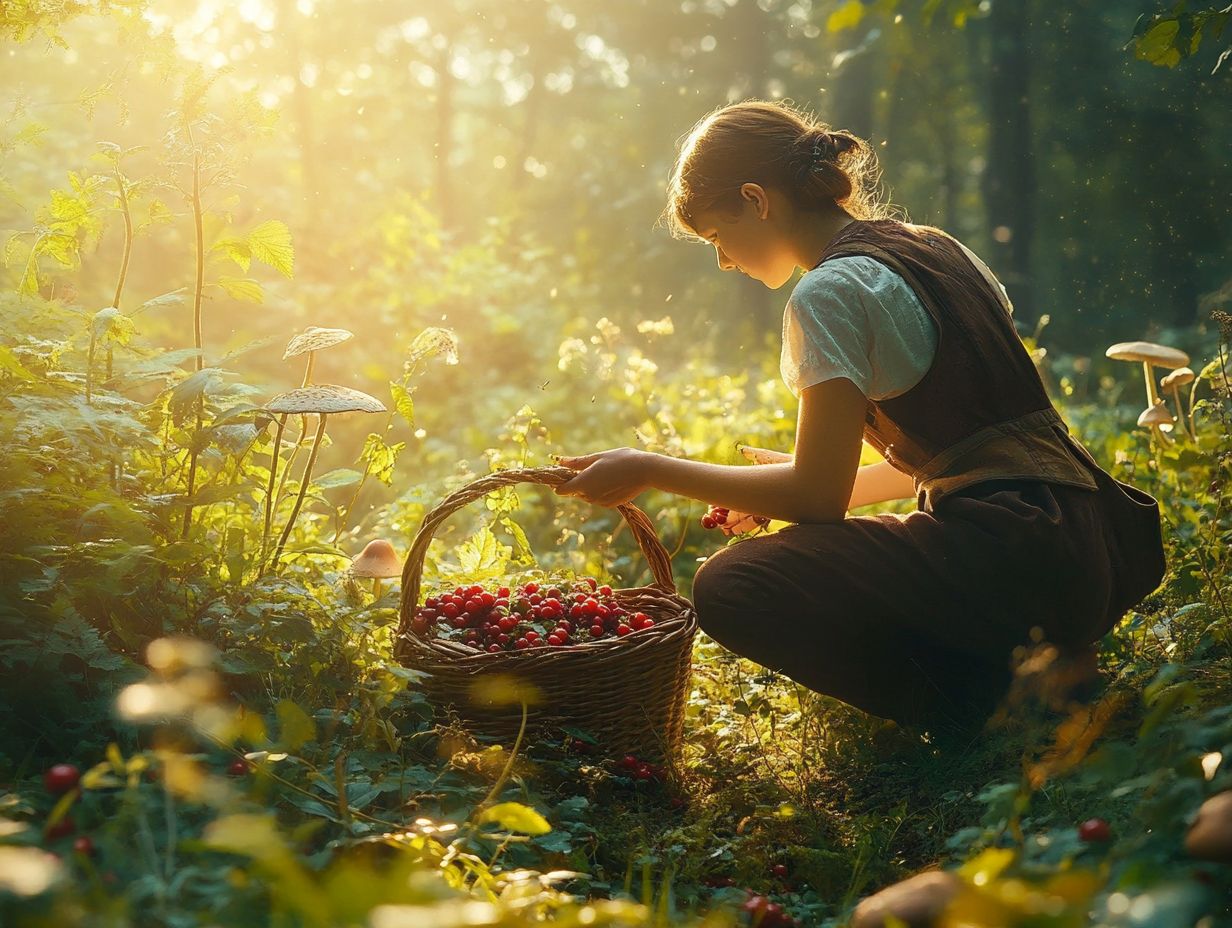
When is the Best Time to Forage?
The best time to forage depends on your location and what you’re seeking. Generally, spring and fall are ideal due to mild weather and peak plant growth.
Can I Forage at Any Time of the Day?
Early mornings and late afternoons are most productive when it s cooler. However, you can forage during the day too if you stay hydrated.
What is the Best Weather for Foraging?
Foraging is easiest on dry days with little wind. Avoid heavy rain, as it can make plants slippery and the ground muddy.
Should I Forage in the Forest or in Open Fields?
Your foraging location depends on what you want. Forests yield mushrooms and berries, while open fields are ideal for herbs and edible weeds.
Is There a Specific Season for Foraging?
Foraging is possible year-round, but specific plants have their seasons. For instance, wild strawberries are early summer delights, while mushrooms thrive in fall.
Are There Any Dangers to Foraging?
Foraging is fun but can be risky. Always ensure you’re identifying plants correctly, as some might be poisonous.

